Soccer drills
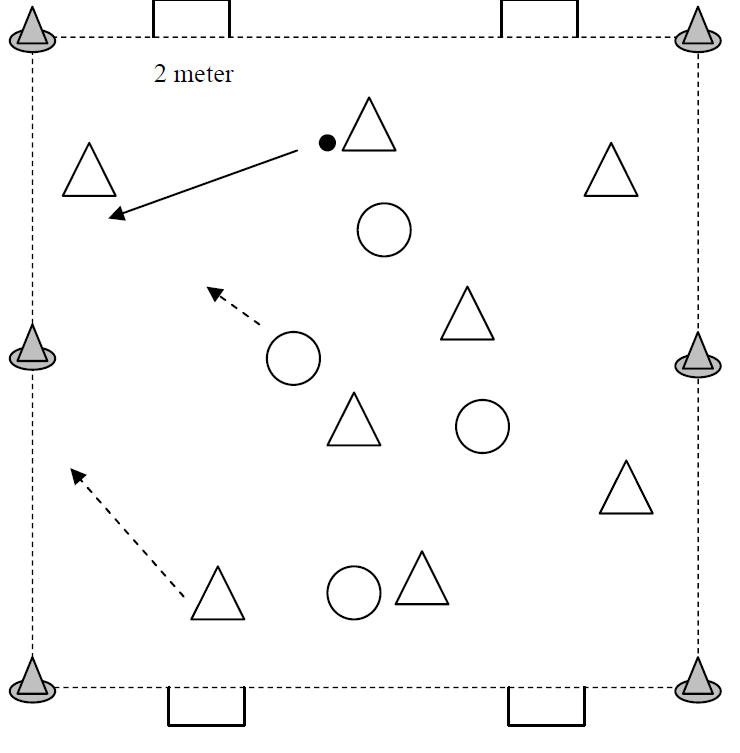
Organization:
There will be played 8 against 4.
6:3, 7:3, 7:4, 9:4 or 9:5 is also possible.
With more or less players the dimensions have to be adjusted.
The 8 may score after 5 passes.
The 4 may always try to score.
If the ball is intercepted by the 4, if the ball goes out or after scoring, there must be counted again.
After, in total, 5 goals or after 10 minutes, teams are switched
To make it easier or more difficult, the number of replaying can be changed.
Points of attention:
Use the left and right foot.
If possible keep the ball low
Assuming the right foot.
Correct ball speed.
Direct play.
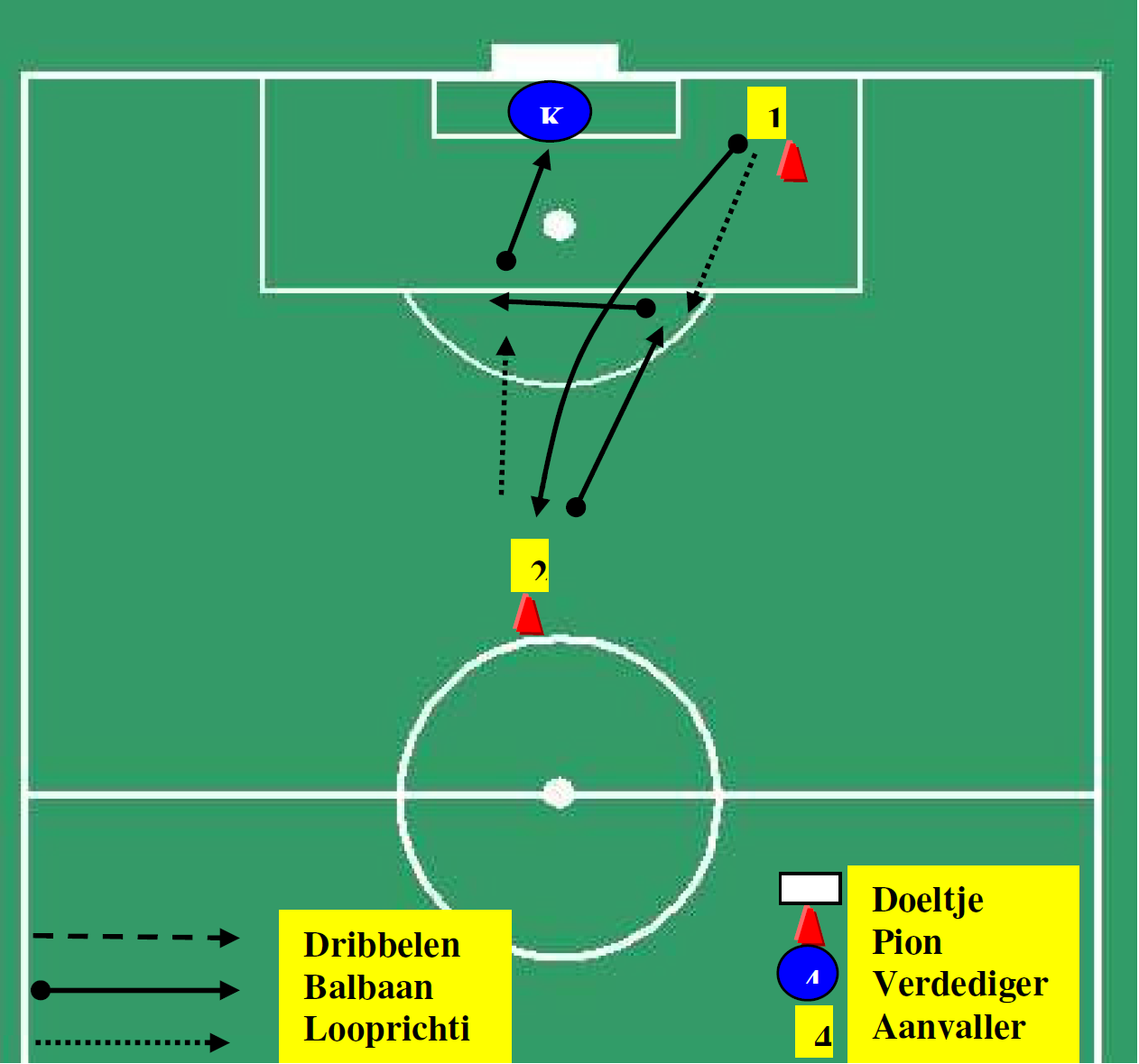
Description
- No. 1 gives a long pass on no. 2
- No. 1 presents itself for the 1 - 2
- No. 2 enters the ball and passes the ball on no. 1
- He's playing him on the inside
- Player number 1 passes the ball with his right leg at number 2
- Player #1 controls the ball or shoots directly at the goal
- When working from the other side than using the left leg
Structure of the exercise form
- Pairs of two with one ball
- Players at number 1 have ball possession
- After having worked change tasks and connect behind
- Increasing/reducing distances
Coaching
- Play the ball tight
- Play the ball on the inside so you have to play with the right.
- The ball will then come to the finisher
- Make sure players don't stand still for too long

Organization:
- There will be played 6 against 3.
- 8: 4, 6:3, 7:3, 7:4, 9:4 or 9:5 is also possible.
- With more or less players the dimensions have to be adjusted.
- The 6 may score after 4 replay.
- The 3 may always try to score.
- If the ball is intercepted by the trio, if the ball goes into touch or after scoring, there must be
- to be recounted.
- After, in total, 5 goals or after 10 minutes of substitution.
- In order to make it easier or more difficult, the number of passes can be changed.
Points of attention:
- Use the left and right foot.
- If possible, keep the ball low
- Assuming the right foot.
- Right ball speed.
- Immediate play.
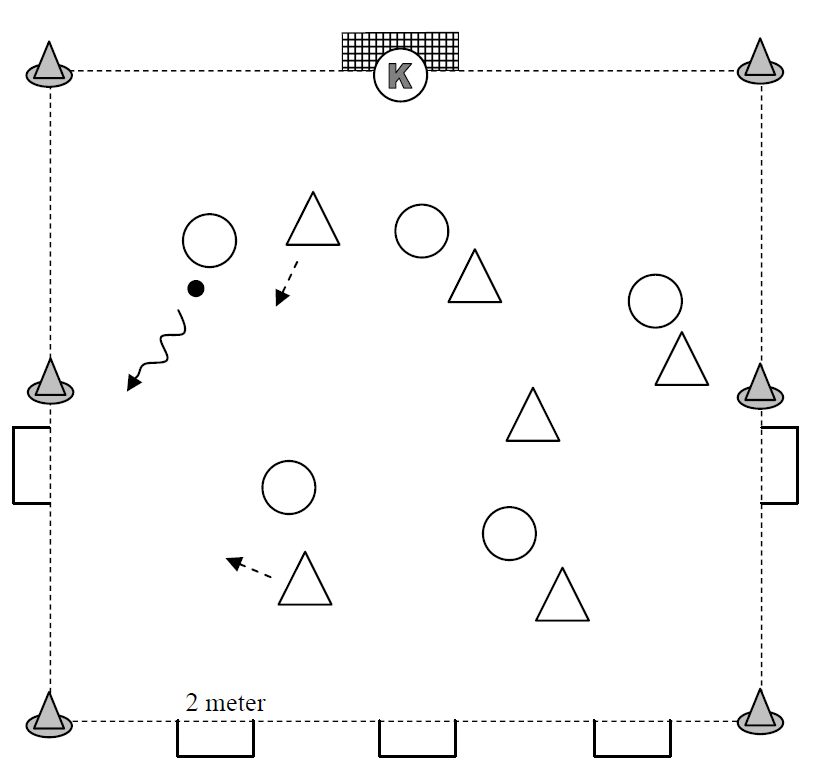
Organization:
- There will be played 4 against 4 + goalkeeper.
- If the party that has to score on the big goal has lost the ball, they have to defend 5 goals.
- After 15 minutes there's a changing of halves.
Remarks:
- If the triangles' attackers lose the ball, they can very quickly score a counter-goal.
- Especially the players who don't defend often in the league games won't like this kind of game.
Points of attention:
- Cover the man in time.
- Don't go in too quick.
- Cover on the right side.
- Posture during the duels, through the knees.
Description:
- Bowling: 1 player of each team takes turns kicking a ball from 5m to 10 cones.
- And tries to kick as many cones as possible.
Organization
- 10 cones in pyramid shape
- 5 m further a game from where the players may kick.
Duration:
- 10 min
Coaching:
- Take a good look
- Accurate passing
Note:
- start at 5m
- then 10m
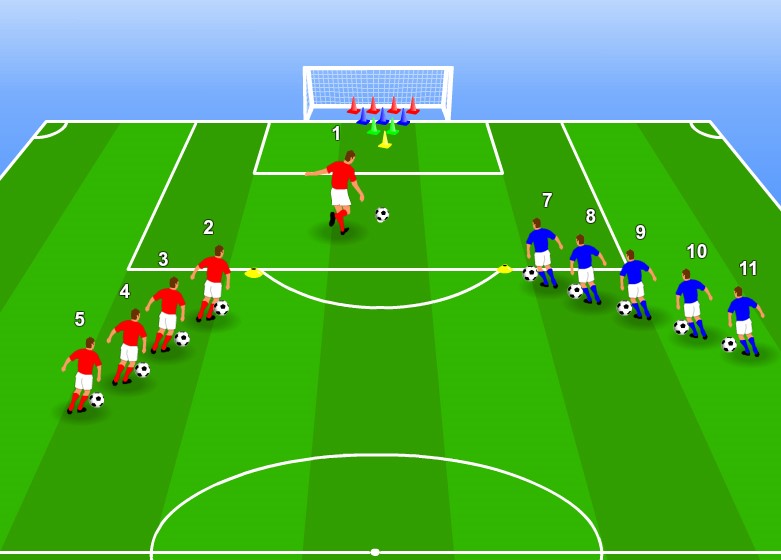
Description:
- Island Soccer: 2 teams that each have to keep their island free of bombs.
- Getting the bombs as fast as possible on the island by quickly leading over the 3 footbridges (Goals)
Organisation
- Field: ½ field (25x35m)
Duration:
- 10 min
Coaching:
- Faster
- Ball close to the foot
Fun:
- Without a defender
- With 1 guard on the island each (hands on the back)
- 1 guard per team per island (i.e. 2 guards per side)
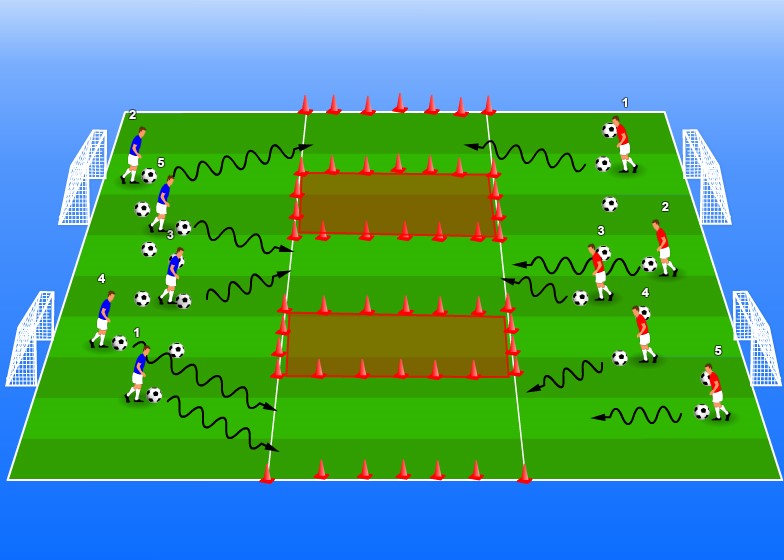
- Box training
- Line up:
- 4 pilons in box shape at 2m distance from each other.
- 4 pilons round at 4m from each other.
- Task 1: Drive the ball to the other side through the middle box without colliding.
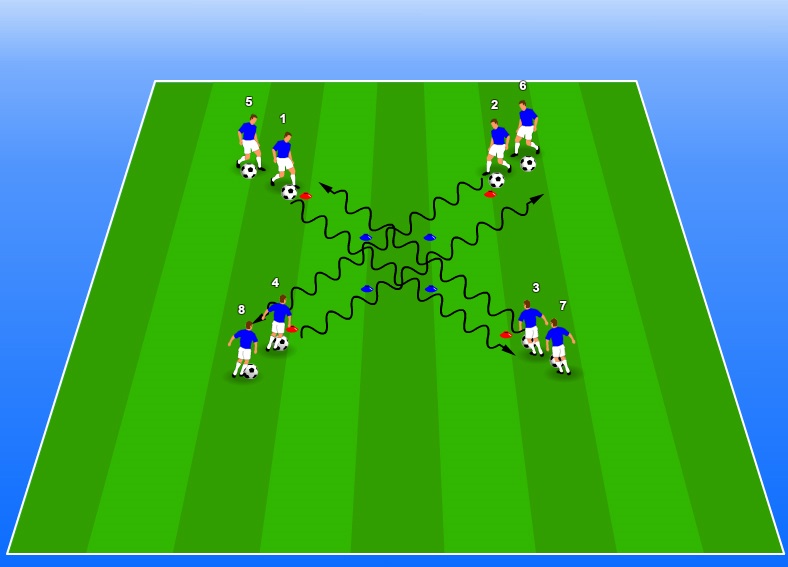
Task 2: Drive the ball to the first pilon with the left foot to the right and take it to the next pilon to the right of starting position.
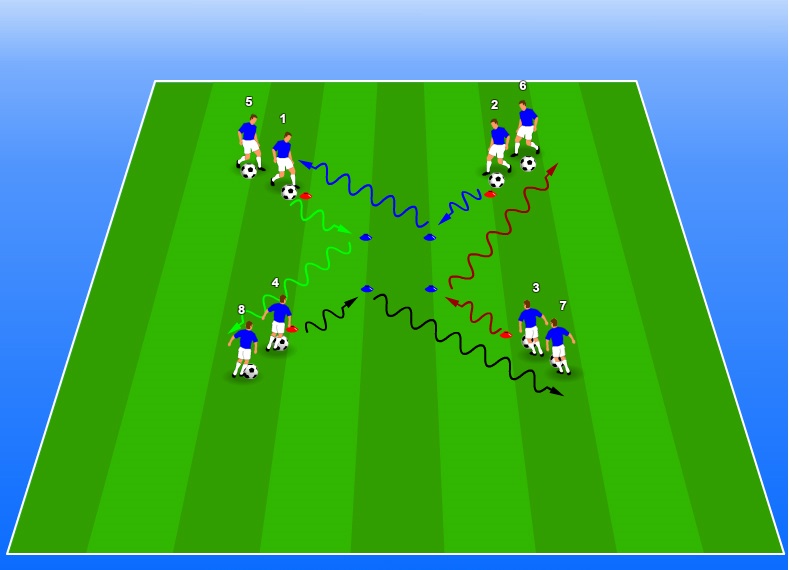
Task 3: Drive the ball to the first pilon with the right foot to the left and take it to the next pilon to the left of starting position.
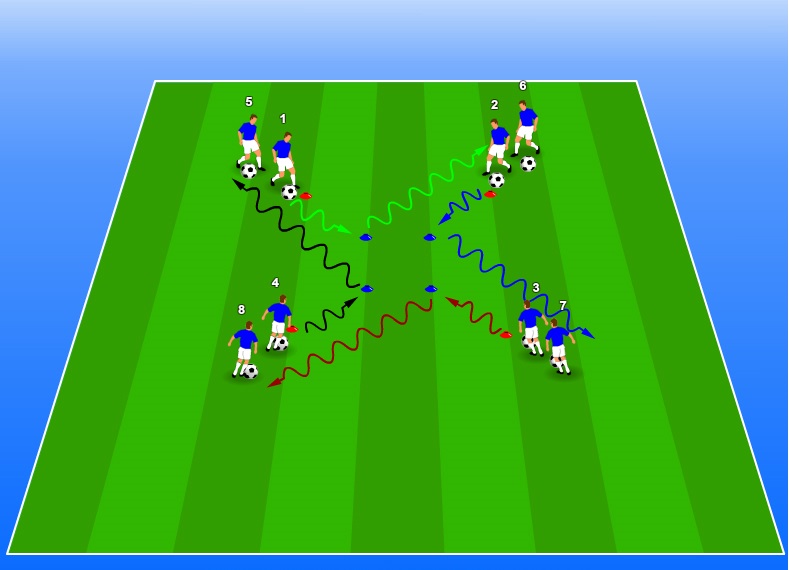
Task 4: Drive the ball to the first pilon with the left foot to the right and pass the ball to the player on the right of starting position (pass with right)

Task 5: Drive the ball to the first pilon with the right foot to the left and pass the ball to the player to the left of starting position. (Pass with left)
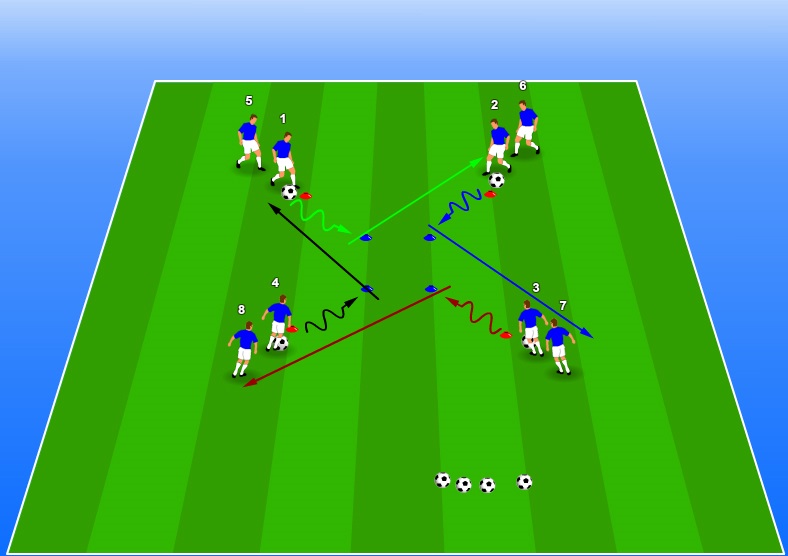
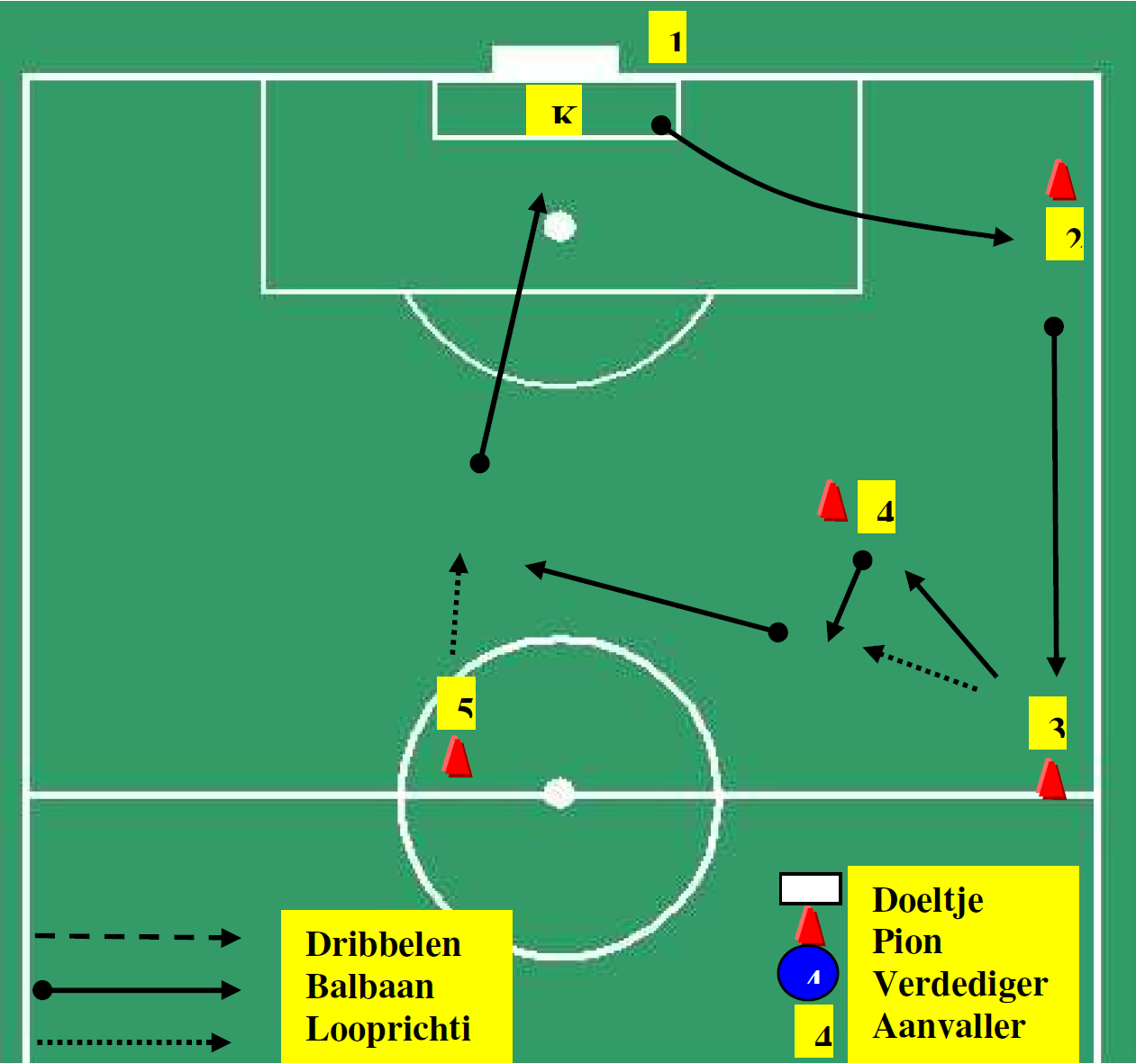
Content
- No. 1 or goalkeeper takes a goal kick
- No. 2 takes the ball
- No. 2 gives a depth pass on no. 3
- No. 3 plays in on no. 4 this comes in the ball
- No. 4 makes room for the incoming player
- No. 3 plays no. 5 to
- No. 5 takes the ball and scores
Structure of the exercise form
- At number 1 two players with a ball
- At 2, 3 and 5 three players
- Move from 1 to 5
- If there is no goalkeeper then 5 goes on goal
- Increasing/reducing distances
- Responding to the outer leg
- Eye contact and getting into the ball
- At position 4, add a defender
- Ball over the ground and/or through the air
- In case of delay, player 1 takes the goal kick
Coaching
- When No. 1 has control over the ball, only then come into the ball
- At no. 4 first away from the ball and then into the ball
- Ensuring that one does not fall short of each other that's easy to defend
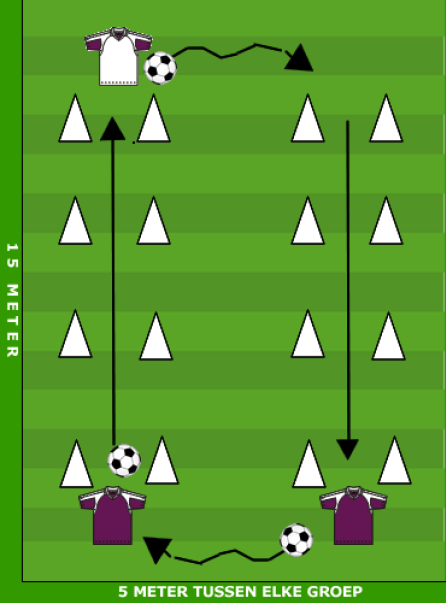
Field setup:
- Place 2 x 4 x 2 pilons next to each other so that two streets of pilons are formed.
The course of play:
- The players have to try to pass exactly through the pilon street and then sprint through it after the ball.
- Another player (white) receives the ball and dribbles to the other street.
- There this player does exactly the same towards player 3.
- Player 3 starts again on the same spot as player 1.
Laws of the Game:
- The ball must pass through the pilon street.
- If you hit a pilon, you have to sprint to straighten the pilon and try again.
- The ball must pass all pilons before the receiving player can take it.
- The following exercise contains a lot of speed, agility, coordination, passing and even duelling.
- A speed exercise that can be done at any time of the training.
- Any age group can do this exercise. There are enough variations possible that you can apply yourself.
- With the younger and even the older groups the FUN aspect is also very pleasant.
- You can apply this form of exercise to different distances. It is especially important to look at your age group and what you want to achieve.
- Both players A leave with shoulder to shoulder until they're between the poles.
- (1), They then accelerate around the pilon and go back to the stick
- (2,3). Behind the stick, they go sideways over the hurdles
- (4). Again they go behind the stick and accelerate forward to the stick that's the furthest away.
- (5). Back to the other pole again
- (6) to then get a ball played in from B
- (7) on which A finishes on target
- (8).Player who finishes first wins.
- In the older ages you can have the loser do push-ups or do an extra job.
- At younger ages you add up the points.
- A takes the place of B and B goes to A.
- As a variation, you can have players B throw up the ball so that A has to head the ball inside the goal.
- As you can see, it is all about speed, agility and coordination
- Whoever wins, it's always fun and hard work is done
- Have fun with this speed exercise and let us know what you thought of it
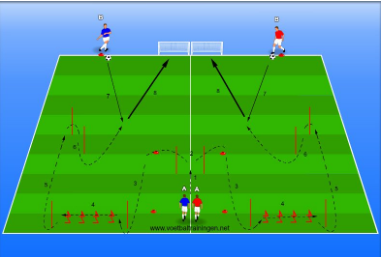
- Scoring by shooting / passing towards a pilon
- Controlling a rolling ball in front of or on the line
- Good first touch (keep the ball under control)
- Pass with inside foot / instep towards the pilon
- Choose position to receive the ball
- Make sure that you pay attention not only to the player who is passing, but also to the player at the other side that has to control the ball
- An alternative may be not to work with individual scores, but with a score per pair. The couple that gets the most points wins








